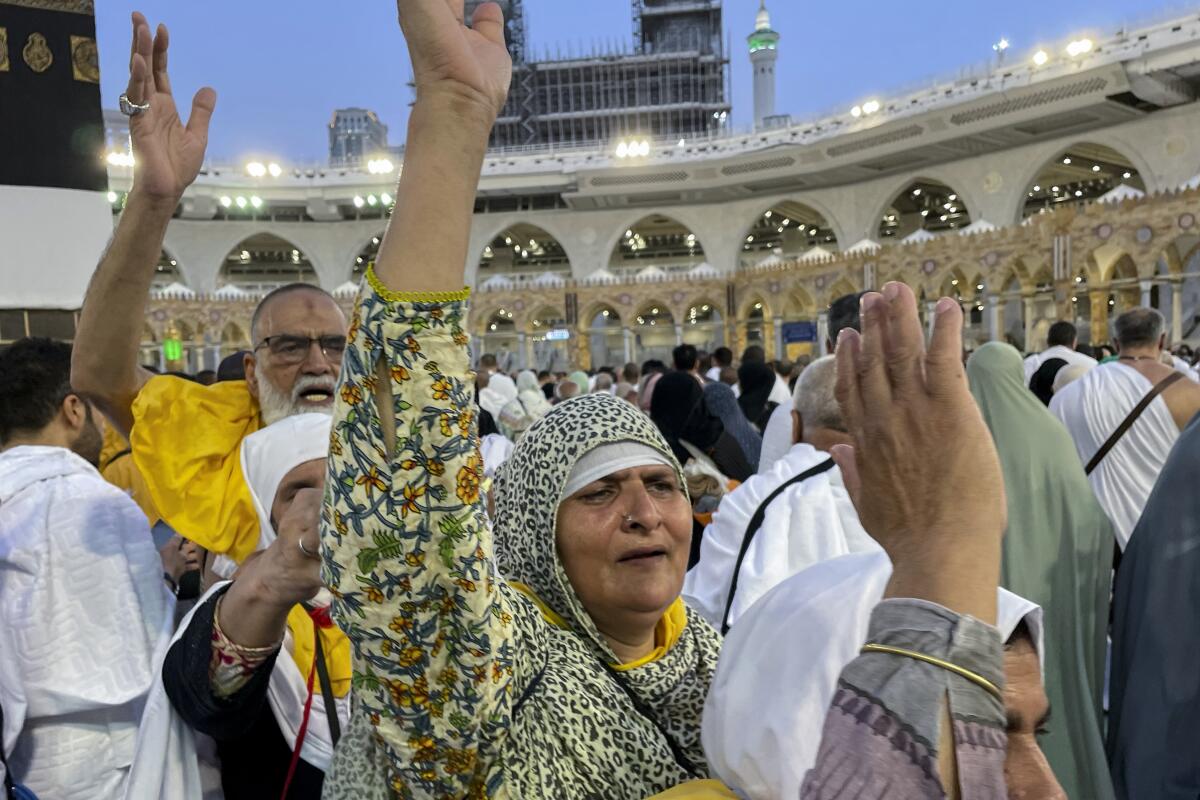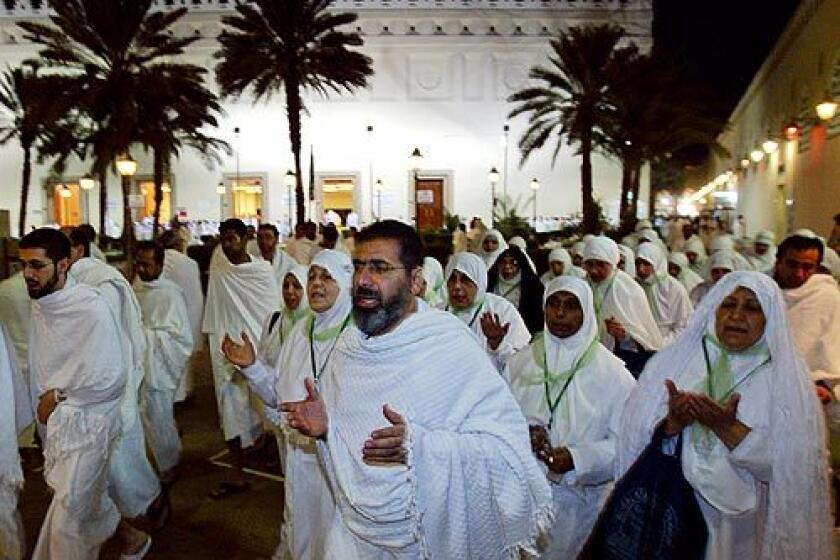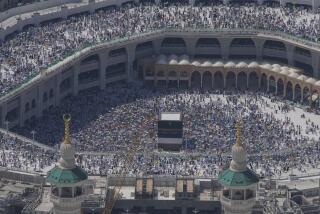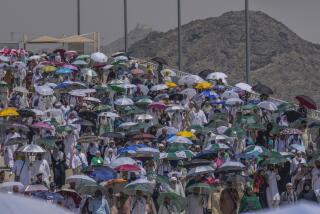Hajj pilgrimage begins in Saudi Arabia, with capacity crowd of 2 million expected

- Share via
MINA, Saudi Arabia — Some 2 million Muslim pilgrims officially began the annual Hajj pilgrimage Monday, making their way out of Mecca after circling Islam’s holiest site, the Kaaba, and converging on a vast tent camp in the nearby desert for a day and night of prayer.
One of the largest religious gatherings in the world has returned to full capacity this year for the first time since the onset of the COVID-19 pandemic three years ago.
The pilgrimage is one of the five pillars of Islam, and all Muslims are required to make the five-day Hajj at least once in their lives if they are physically and financially able to do it.
For pilgrims, it is a deeply moving spiritual experience that absolves sins, brings them closer to God and unites the world’s more than 1.8 billion Muslims. Some spend years saving up money and waiting for a permit to embark on the journey.
The rituals during the Hajj largely commemorate the Quran’s accounts of Ibrahim, his son Ismail and Ismail’s mother, Hajar.
Pilgrims have been making the ritual circuit around the Kaaba since arriving in Mecca over recent days. As the last people performed it Monday, the pilgrims made their way by foot or by bus to Mina, where they will camp in one of the largest tent cities in the world. They will pray throughout the day and night before traveling Tuesday to Mt. Arafat, where the prophet Muhammad is said to have delivered his final sermon.
With this year’s pilgrimage to Mecca restricted to a mere 1,000 participants, app developers have created ways to experience the hajj virtually.
Mina is vast and open, with little respite from the desert heat and blazing sun. Soldiers sprayed pilgrims with water to cool them down.
Egyptian businessman Yehya Ghanam said he was at a loss for words to describe his feelings upon arriving at Mina.
“Tears will fall from my eyes out of joy and happiness,” he said.
“I do not sleep. I have not slept for 15 days — only an hour a day,” he said, describing how overwhelmed he has felt by the emotions surrounding his pilgrimage.
After Arafat, pilgrims collect pebbles from a site known as Muzdalifa to be used back in Mina for the symbolic stoning of pillars representing the devil. The final three days of the Hajj coincide with the festive Eid al-Adha holiday, when Muslims around the world slaughter livestock and distribute the meat to the poor.
More to Read
Sign up for Essential California
The most important California stories and recommendations in your inbox every morning.
You may occasionally receive promotional content from the Los Angeles Times.











